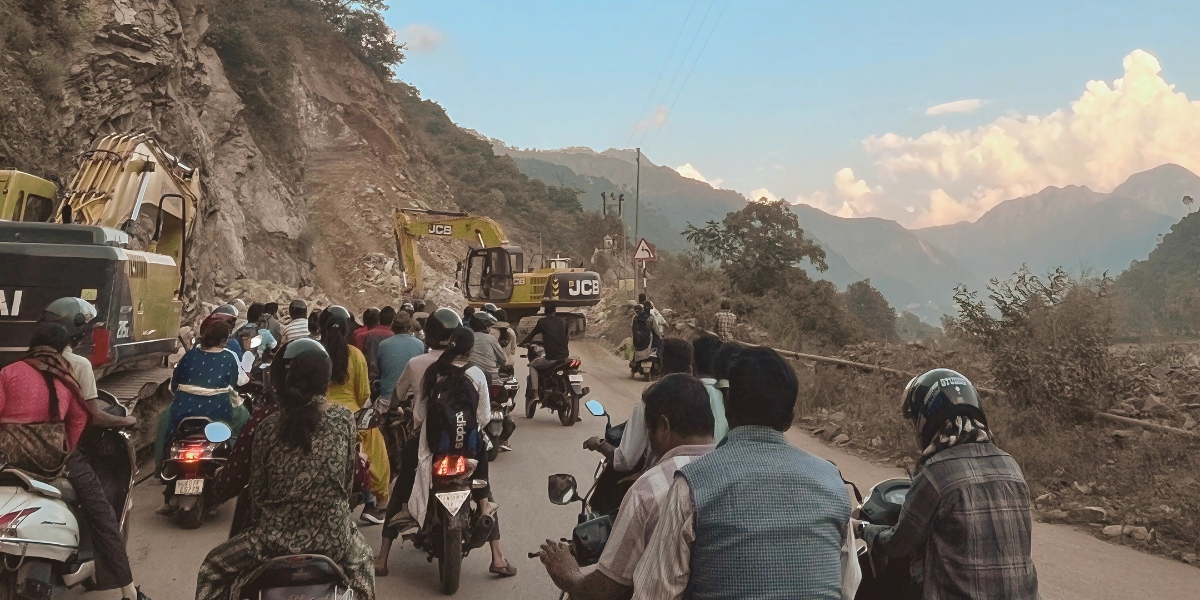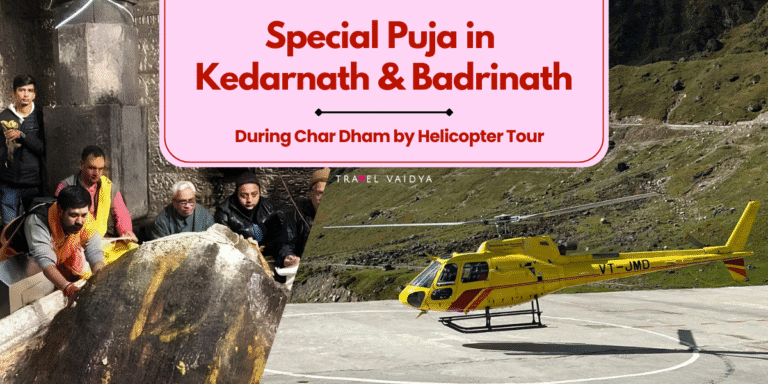Char Dham Yatra road condition varies, but the ongoing All-Weather Road Project aims to make travel to Yamunotri, Gangotri, Kedarnath, and Badrinath smoother and safer. Follow UTDB and government guidelines for updates on closures, safety tips, and road accessibility to ensure a secure and convenient pilgrimage experience.
Table of Contents
Plan Your Spiritual Yatra With Us !
Get Customised Private Tours by Experts from Travel Vaidya
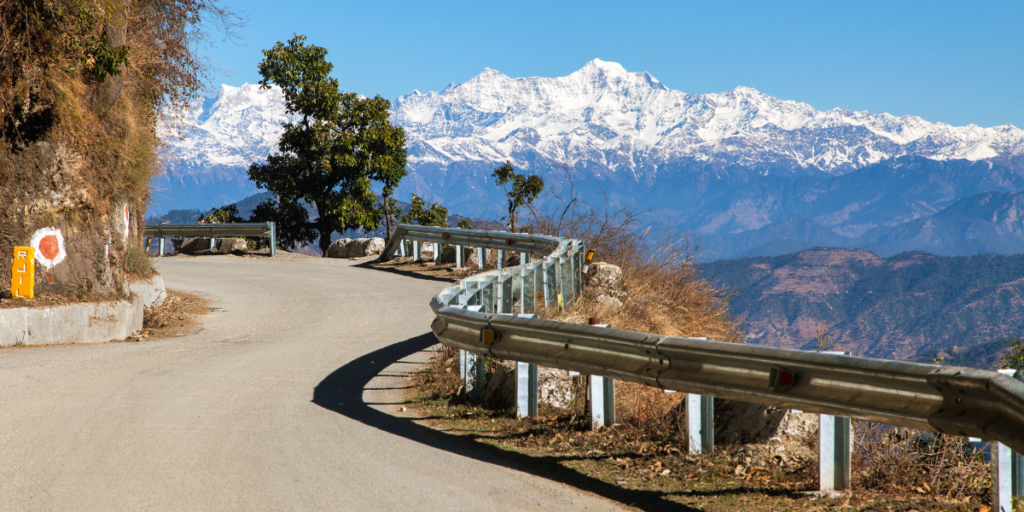
Road Conditions During Char Dham Yatra
Char Dham Yatra road conditions are improving steadily with the 1,607-kilometer Char Dham Pariyojana project. Ongoing upgrades in key areas like Yamunotri, Sonprayag, Chamoli, and Badrinath, promise safer and smoother travel. Pilgrims can look forward to better connectivity and enhanced infrastructure for a more comfortable pilgrimage experience.
Char Dham Road Condition in Summer (April to June)
Char Dham Yatra road conditions in summer (April to June) are mostly favorable, with clear roads and minimal weather disruptions. However, increased pilgrim traffic can lead to congestion at key points. Travelers are advised to plan ahead, start early, and stay updated on route conditions for a smooth pilgrimage experience.
Char Dham Road Condition in Monsoon (July & Aug)
Char Dham Yatra road conditions in July and August face challenges due to monsoon rains and frequent landslides. Travelers should exercise caution, stay updated on route closures, and prepare for possible delays. While the lush scenery is breathtaking, safety should remain a top priority during this season.
Char Dham Road Condition in Winters (Sept, Oct & Nov)
Char Dham Yatra road conditions in winter (September, October, and November) are typically cold with no significant snowfall. Roads remain accessible, but chilly temperatures are expected. Pilgrims should bring woolen clothing and be prepared for colder conditions, ensuring a comfortable and safe travel experience through this peaceful season.
Plan Ahead: Check weather updates and road conditions for your travel season.
Start Early: Begin your journey early to avoid traffic and unexpected delays.
Pack Essentials: Carry woolens, rain gear, first aid kits, and necessary medications.
Stay Connected: Keep a charged mobile phone and power bank for emergencies.
Prioritize Safety: Follow local advisories, especially during monsoons, and stay alert on steep roads.
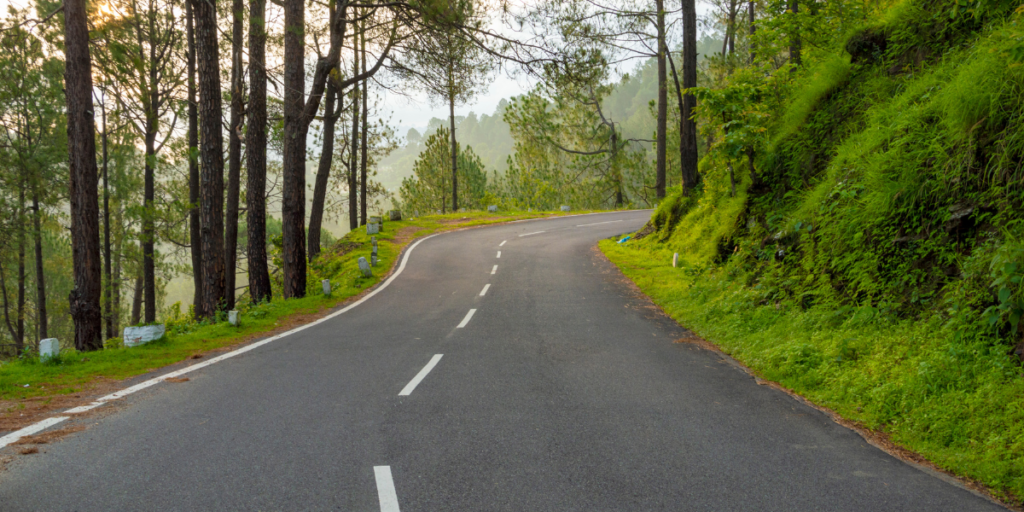
Yamunotri Road Conditions
Yamunotri road conditions vary along the route, starting from Delhi to Dehradun (248 km), followed by Barkot (127 km), and ending at Janki Chatti (50 km). While highways are smooth, the hill roads become narrow and winding, demanding caution. Scenic views along the journey add to the spiritual experience.
The final 6 km trek from Janki Chatti to Yamunotri is well-paved and offers options like ponies and palanquins. Yamunotri road conditions are improving under the Char Dham Pariyojana project, enhancing safety and convenience. Travelers should check weather updates, drive carefully, and start early to ensure a smooth pilgrimage.
Gangotri Road Conditions
Gangotri road conditions are generally favorable during the summer months, offering smooth access to the sacred shrine. Starting from Rishikesh (243 km to Uttarkashi), the drive includes a further 100 km to Gangotri. The roads are well-maintained but include winding mountain stretches with steep ascents, requiring caution while driving.
Frequent landslides during monsoon (July & August) can disrupt the route, so travelers should check weather updates. As part of the Char Dham Pariyojana, roadwork is improving connectivity. The picturesque route passes through dense forests and rivers, adding to the pilgrimage’s charm. Drivers are advised to honk at curves and start early for safety.

Read Related Blogs
Top Places to Visit During Char Dham Yatra »
Char Dham Yatra Route Map: Best Road Journey Guide »
Char Dham Yatra Significance: Why It’s a Must-Visit »
Top 6 Travel Tips for a Smooth Char Dham Yatra »
Monsoon Packing Guide for Char Dham Yatra »
Summer Packing Checklist for Char Dham Yatra »
What to Pack for Char Dham Yatra: Essentials Guide »
Char Dham Yatra Budget: How Much Does It Cost? »
Kedarnath Road Conditions
Reaching Kedarnath involves driving from Rishikesh to Gaurikund (223 km), the base for the 16 km trek to the shrine. Kedarnath road conditions are steep and narrow, particularly after Guptkashi. While most routes are motorable, the hill drives can be challenging, with sharp hairpin bends and occasional landslides during monsoons.
The Char Dham Pariyojana aims to improve the route, but ongoing construction can cause delays. Pilgrims should plan carefully, carry essentials, and consider taking helicopter services from nearby hubs like Phata. The trek path is well-marked and offers ponies, palkis, and pitthus for added convenience, ensuring a comfortable pilgrimage.
Badrinath Road Conditions
Badrinath road conditions are among the best in the Char Dham circuit. The 297 km drive from Rishikesh via Joshimath is mostly smooth, with wider and better-maintained roads. The last stretch to Badrinath is narrow and prone to occasional traffic jams, but improvements under the Char Dham Pariyojana are evident.
The route offers breathtaking mountain views, making the drive enjoyable despite steep ascents. Pilgrims should avoid night driving, carry woolens due to the cold weather, and check traffic updates to avoid congestion near Joshimath. The road is motorable up to the temple, offering convenient access for travelers of all age groups.
Gangotri to Kedarnath Distance by Road
The distance from Gangotri to Kedarnath is around 460 km via road, ending at Sonprayag. From there, it’s a 16 km trek to the Kedarnath shrine. This route passes through Uttarkashi, Ghansali, and Guptkashi, and is typically covered over 2 days. The route is motorable and forms part of the Char Dham circuit.
- Gangotri to Sonprayag: approx. 460 km
- Sonprayag to Kedarnath: 16 km trek
- Total duration: 2 days (recommended)
How far is Kedarnath from Gangotri by car or taxi?
By car or private taxi, it takes around 14–16 hours to reach Sonprayag from Gangotri. This includes multiple hill stretches, traffic-prone areas, and road maintenance zones. After reaching Sonprayag, one must either trek or fly to Kedarnath. Driving in one go is tiring, so a night halt at Guptkashi or Sitapur is recommended.
- Travel time: 14–16 hours (over 2 days)
- Private taxi best suited
- Night halt is a must
Can I travel directly from Gangotri to Kedarnath in one day?
Technically yes, but practically no. The journey is too long and exhausting for one day, especially for families and senior citizens. You must cover approx. 460 km of hill roads and still trek 16 km. It’s best to halt overnight at Guptkashi or Sitapur before proceeding to Kedarnath.
- Not advisable for same-day travel
- Requires early start + night halt
- Unsafe and tiring in a single stretch
What’s the best route to take from Gangotri to Kedarnath?
The most preferred and stable route is via Uttarkashi → Ghansali → Tilwara → Guptkashi → Sonprayag. This is the same route followed by most Char Dham tour operators. Roads are usually open from May to October. Always confirm weather updates before departure.
- Via Uttarkashi–Ghansali–Guptkashi
- Used in most tour packages
- Better road and hotel availability
Is there any local transport available between Gangotri and Kedarnath?
No direct local transport connects Gangotri to Kedarnath. You can get shared jeeps till Uttarkashi or Ghansali, but beyond that, you’ll need to switch vehicles multiple times. For a seamless experience, it’s better to book a private cab or full package.
- No direct bus or shared route
- Requires multiple vehicle changes
- Not ideal for senior citizens
How long does it take to reach Kedarnath from Gangotri?
Expect a 2-day travel time from Gangotri to Kedarnath. Day 1: drive to Guptkashi or Sitapur. Day 2: early drive to Sonprayag and start the trek or take helicopter. Road conditions and weather may delay the journey, so add buffer time.
- Day 1: Gangotri to Guptkashi (~10 hrs)
- Day 2: To Sonprayag + 16 km trek
- Add buffer for roadblocks
What are the road conditions like from Gangotri to Kedarnath?
Roads are mostly motorable but include narrow turns, steep climbs, and areas prone to landslides during rains. Some patches between Ghansali and Tilwara are rough. Roads are better maintained post-May when the yatra begins. Avoid during peak monsoon.
- Steep mountain roads
- Some stretches prone to landslides
- Avoid travel during July–August
Are there any night stays required on the way from Gangotri to Kedarnath?
Yes, a night halt is necessary due to the long travel hours. Most yatris stay in Guptkashi or Sitapur, both of which have good hotel options. This break helps in resting and preparing for the Kedarnath trek the next day.
- Ideal halt: Guptkashi / Sitapur
- Breaks journey into 2 easy legs
- Must for seniors and families
Is the Gangotri to Kedarnath route safe for senior citizens?
Yes, if you plan with care. Avoid rushing, book a private vehicle, and take proper halts. Choose hotels with hot water and meals. Opt for helicopter or palki for Kedarnath trek. Always carry woolens and altitude meds.
- Safe with right planning
- Use helicopter/palki for Kedarnath
- Avoid monsoon travel
Can I visit both Gangotri and Kedarnath in a single Char Dham tour?
Yes, both are covered in all standard Char Dham Yatra packages. Gangotri usually comes before Kedarnath in the travel route. Most packages keep a 2-day gap between the two to allow for relaxed travel and darshan.
- Gangotri → Kedarnath route is standard
- Tour gap of 2 days is ideal
- Best in May–June and Sept–Oct
Which place is better to visit first – Gangotri or Kedarnath?
Gangotri is visited first as per the traditional Char Dham sequence. It helps with altitude adjustment and smoother road planning. Kedarnath is higher in altitude and comes after Gangotri in the clockwise route.
- Yamunotri → Gangotri → Kedarnath → Badrinath
- Gangotri is lower in altitude
- Helps with gradual altitude gain
What is the distance between Gangotri and Kedarnath via Guptkashi?
Gangotri to Guptkashi is approx. 360–380 km depending on the route. Guptkashi to Sonprayag adds another 30 km. Then comes the 16 km trek to Kedarnath. The entire journey totals nearly 460+ km over 2 days.
- Gangotri to Guptkashi: ~380 km
- Guptkashi to Sonprayag: ~30 km
- Kedarnath trek: 16 km
Are shared taxis available from Gangotri to Kedarnath route?
Shared taxis operate in limited sections like Gangotri–Uttarkashi and Rudraprayag–Guptkashi, but no direct shared ride covers the entire route. You’ll need to break the journey several times. Private taxi or packaged tour is better.
- No end-to-end shared taxi
- Too many vehicle swaps needed
- Private cabs more reliable
How many kilometers is it from Gangotri to Sonprayag or Gaurikund?
The distance from Gangotri to Sonprayag is around 430–440 km, depending on the exact road route. Gaurikund lies 5 km ahead and is the starting point of the Kedarnath trek. Expect 12–14 hours of travel time.
- Gangotri to Sonprayag: ~430 km
- Sonprayag to Gaurikund: 5 km
- Kedarnath trek: 16 km from Gaurikund
Which route is shorter – Gangotri to Kedarnath via Uttarkashi or Tehri?
The route via Uttarkashi is shorter, safer, and widely used in Char Dham plans. The Tehri route adds distance and includes rougher roads. Uttarkashi route offers more halts, fuel stations, and accommodation options.
- Uttarkashi route preferred
- Tehri route longer and tiring
- Stick to standard Gangotri–Uttarkashi–Guptkashi
Distance from Yamunotri to Gangotri by road
The road distance from Yamunotri (Janki Chatti) to Gangotri is approximately 230 km, and the entire route takes about 8 to 10 hours depending on traffic and weather. You’ll pass through Barkot, Dharasu, and Uttarkashi—key towns on the Char Dham circuit. Though the road is fully motorable, it’s a hilly route, so speeds are slow. Most yatris cover this distance over a full day, with short tea and meal breaks along the way.
• Distance: approx. 230 km
• Duration: 8–10 hours
• Route: Janki Chatti → Barkot → Uttarkashi → Gangotri
How long does it take to reach Gangotri from Yamunotri by taxi or car?
It takes nearly 9 to 10 hours by taxi or car to reach Gangotri from Yamunotri. The drive is long but scenic, passing through pine forests and riverside stretches. Most pilgrims start their journey early in the morning after completing Yamunotri darshan, ideally by 6–7 AM. A private taxi is the best way to cover this leg smoothly. Self-driving is possible but requires good hill driving experience.
• Duration: Full-day drive
• Best start time: Before 7:00 AM
• Private taxi is most reliable
Can I travel from Yamunotri to Gangotri in one day? Is it safe?
Yes, it’s possible to travel from Yamunotri (after the temple visit) to Gangotri in one day by road. However, the plan works only if you begin the trek early morning, return to Janki Chatti or Barkot by 11 AM, and depart immediately. The roads are safe during yatra months (May–June, Sept–Oct) but avoid late-night travel. For a more relaxed plan, stay overnight at Uttarkashi.
• Trek + Drive doable in one long day
• Start early and avoid delays
• Consider a night halt if tired
What is the best route from Yamunotri to Gangotri in 2025?
The standard and most reliable route from Yamunotri to Gangotri is via Janki Chatti → Barkot → Dharasu → Uttarkashi → Gangotri. This is the same road followed in all Char Dham Yatra packages. Road conditions are generally good after May, and you’ll find petrol pumps, hotels, and medical shops along the way. Avoid lesser-known shortcuts that aren’t maintained regularly.
• Common Char Dham route
• Includes key towns like Barkot and Uttarkashi
• Well-maintained and safe for all vehicles
Are there any direct taxis or shared vehicles from Yamunotri to Gangotri?
There are no direct shared taxis from Yamunotri to Gangotri. You may find shared jeeps or buses from Barkot to Uttarkashi, and then another from Uttarkashi to Gangotri. However, these are time-consuming, irregular, and uncomfortable. For smooth travel, book a private taxi or a full Char Dham tour package that includes hotel and transport.
• No end-to-end shared transport
• Multiple breaks and changes
• Private taxi or package best for comfort
What are the road conditions like from Yamunotri to Gangotri?
Roads are mostly good but narrow and winding in sections. Areas near Dharasu and Barkot may have sharp bends and landslide zones, especially during monsoon. From Uttarkashi onwards, the drive becomes scenic but steeper. The entire stretch is tarred and drivable in summer, but landslides can block roads during heavy rains.
• Best driving window: May–June, Sept–Oct
• Avoid monsoon (July–Aug)
• Watch for sharp turns and mountain traffic
Where should I stay overnight between Yamunotri and Gangotri?
The best place to stay mid-way is Uttarkashi, which is about 140 km from Janki Chatti and 100 km before Gangotri. It’s a well-developed town with clean hotels, good food, medical shops, and fuel stations. Most yatris halt here to rest before starting early for Gangotri next morning. Pre-booking hotels here is a smart idea during peak season.
• Ideal halt: Uttarkashi
• Good for families and groups
• All essential facilities available
Is Yamunotri to Gangotri route suitable for senior citizens and families?
Yes, this route is very doable for senior citizens and families if planned with enough rest and buffer time. Don’t rush the journey in one go after trekking Yamunotri. Use a private cab, take a night halt in Uttarkashi, and avoid travel in monsoon. For added comfort, choose deluxe hotels with warm food and Western-style toilets.
• Plan slow travel, not rushed
• Choose deluxe hotels if possible
• Avoid peak July rains
Which place should I visit first – Yamunotri or Gangotri?
Yamunotri is traditionally visited first, followed by Gangotri. This is based on the natural Char Dham sequence that pilgrims follow for altitude adjustment and better route planning. Yamunotri lies at a slightly lower altitude and is also the tougher trek, so it’s better to do it while you’re still fresh.
• Ideal order: Yamunotri → Gangotri → Kedarnath → Badrinath
• Follows clockwise spiritual sequence
• Logistically more convenient
Can I cover Yamunotri and Gangotri in 2 days? What’s the ideal itinerary?
Yes, if planned properly. Day 1: Trek to Yamunotri early morning and return to Barkot or Uttarkashi by evening. Day 2: Drive from there to Gangotri. It’s doable but tiring. For seniors or families with kids, adding one rest day is recommended.
• Day 1: Yamunotri trek + return
• Day 2: Drive to Gangotri (9–10 hrs)
• Add extra rest day if needed
Is public transport available from Barkot or Janki Chatti to Gangotri?
Public transport is limited and not ideal for tourists. You’ll get a shared jeep from Barkot to Uttarkashi, and from there another jeep to Gangotri, but timings are uncertain. During yatra season, long waits are common. Best to travel with a taxi or guided tour.
• Shared jeeps available only in parts
• Irregular and crowded
• Avoid if traveling with family
How far is Barkot from Gangotri and what are the road timings?
Barkot to Gangotri is around 200 km by road and takes roughly 7 to 8 hours. The drive goes through winding mountain roads and small villages. Roads are slow due to sharp bends, so don’t expect high speed. Start early in the day for a smoother trip.
• Distance: ~200 km
• Travel time: 7–8 hours
• Start by 6–7 AM for comfort
What is the road distance between Janki Chatti and Gangotri?
From Janki Chatti, the road distance to Gangotri is around 230–240 km. This stretch includes several uphill sections and may take 9 to 10 hours depending on breaks and traffic. Carry snacks, medicines, and keep your fuel tank full before starting.
• Approx. 230 km with mountain bends
• No big towns between Uttarkashi and Gangotri
• Limited mobile network in some areas
Which route is better – Yamunotri to Gangotri via Barkot or via Uttarkashi?
There’s only one logical and safe route: via Barkot and Uttarkashi. There are no viable alternatives for tourist vehicles. This route is used by all taxis, buses, and Char Dham packages. Always check for road updates during monsoon.
• Route: Janki Chatti → Barkot → Uttarkashi → Gangotri
• Well-maintained and serviced
• No alternate shorter route available
How do tour operators plan the Yamunotri to Gangotri stretch in Char Dham Yatra?
Most Char Dham packages follow a standard plan. Day 1: Trek to Yamunotri and return to Barkot or Uttarkashi. Day 2: Drive to Gangotri with early morning start. Some senior-friendly itineraries add a rest day between the two. Meals and hotels are usually pre-booked.
• Yamunotri first, Gangotri next
• Comfortable drive with rest stop
• Used in all group and private tours
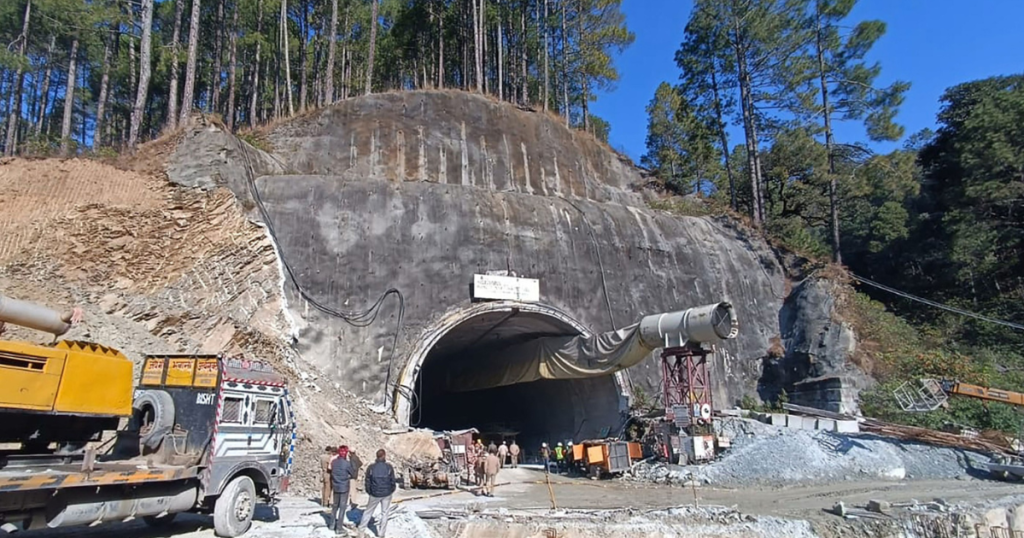
Role of Char Dham All-Weather Highway Development Project
The Char Dham All-Weather Highway Development Project is a landmark initiative designed to improve road infrastructure in Uttarakhand. Announced in December 2016 by Prime Minister Narendra Modi at a rally in Dehradun, the project aims to upgrade roads connecting the revered Char Dhams: Yamunotri, Gangotri, Kedarnath, and Badrinath. With a budget of ₹12,000 crore, this initiative will transform 1,100 km of damaged highways into robust, all-season roads.
Key Impact & Benefits
Economic Growth: Enhanced road connectivity will bolster Uttarakhand’s tourism sector, leading to growth in associated industries such as hospitality and transport.
Improved Safety: Two-lane roads, bridges, and tunnels will reduce travel time by 30–40%, lower fuel consumption, and minimize accidents.
Enhanced Infrastructure: Modern signboards, emergency lay-bys, and bus bays will ensure safer and more comfortable journeys for travelers.
Job Creation: The project will generate employment opportunities, empowering local residents and reducing migration to urban areas.
Strategic Significance: Upgraded roads will improve troop mobility along the India-China border.
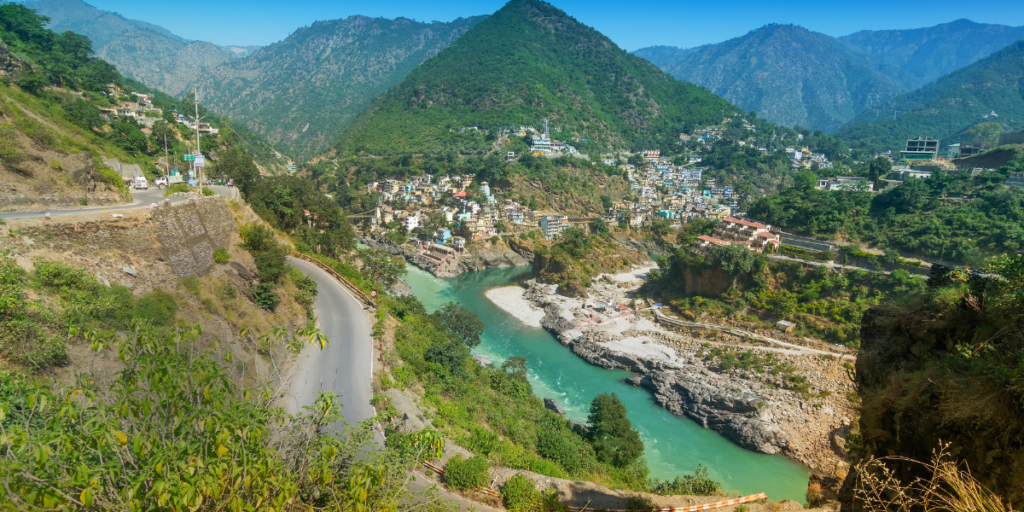
Emergency Services on Char Dham Routes
Medical Services and Facilities
Temporary medical camps and clinics are set up along the routes, staffed with professionals trained to handle high-altitude sickness and other medical emergencies. Mobile ambulances equipped with basic life support also traverse the rugged roads.
Search and Rescue Operations
Specialized teams trained in mountain rescue are stationed at critical points to assist lost or stranded pilgrims. In severe cases, helicopters are deployed for air evacuations, showcasing a critical reliance on aerial support.
Roadside Assistance and Maintenance
Given the treacherous nature of the roads, roadside assistance plays a vital role. Teams equipped with tow trucks, repair tools, and communication systems operate throughout the route, ensuring vehicles can continue their journey safely.
Plan Your Spiritual Yatra With Us !
Get Customised Private Tours by Experts from Travel Vaidya
Read Related Blogs
Essential Packing Tips for Senior Citizens on Char Dham Yatra »
Char Dham Yatra by Road: Everything You Need to Know Before You Go »
The Ancient Roots of Char Dham Yatra: A Journey Through History »
Char Dham Yatra in Monsoon: Risks, Precautions & Travel Tips »
Char Dham Yatra in Summer: Best Time to Visit & Travel Tips »
How to Book Char Dham Yatra Online: A Step-by-Step Guide »
Char Dham Yatra Peak Season: Best Time, Crowds & Smart Travel Tips »
Char Dham Yatra Road Conditions: What to Expect & Travel Tips »
Emergency Services on Char Dham Yatra Route: Hospitals, Helplines & Safety Tips »
About Travel Vaidya – Trusted Travel Experts of Uttarakhand
Travel Vaidya is a Dehradun-based travel company with deep roots across Uttarakhand. For over 9 years, we’ve helped families, senior citizens, and spiritual travelers explore places like Char Dham, Auli, Jim Corbett, Nainital, Kausani, Almora, and Ranikhet with confidence.
We’re not a call center or big-brand OTA—we’re a small team that builds practical, experience-based itineraries. Every plan is shaped by local knowledge, seasonal awareness, and what actually works on-ground.
From temple visits to hotel check-ins, we handle logistics, route planning, and day-wise support—especially for elders and family travelers. We share what we know from living here, not from reading about it.
This guide is part of our effort to make travel in Uttarakhand easier to understand and plan.

Frequently Asked Questions
What is the current road condition for Char Dham Yatra 2025?
Roads to Yamunotri, Gangotri, Kedarnath, and Badrinath are open for 2025. Some patches near Lambagad and Sonprayag may have landslide risk in monsoon. Always check BRO updates before travel.
Is the road from Haridwar to Kedarnath in good condition?
The road via Rishikesh, Rudraprayag, and Guptkashi is mostly motorable. Narrow stretches near Tilwara and Sonprayag may get blocked during rain. Total travel time is 10–12 hours for 230 km.
What’s the road status from Haridwar to Badrinath?
The 320 km route via Rishikesh, Karnaprayag, Chamoli, and Joshimath is open. Sections near Pipalkoti and Lambagad are prone to landslides in July–August. Travel time is 11–13 hours by car.
Is the Chopta route safe for Char Dham travelers?
The Chopta-Gopeshwar route offers a scenic shortcut to Badrinath via Ukhimath. Roads are narrow but open from April to November. Avoid during snow or heavy rain for safety.
Are landslides common during Char Dham Yatra?
Yes, especially from mid-June to August. Areas like Lambagad (Badrinath route) and Sonprayag (Kedarnath route) are vulnerable. It’s best to travel in May or post-monsoon in September.
How is the road condition between Guptkashi and Sonprayag?
This 30 km stretch is steep and narrow but usually open. Travel takes 1.5 hours. During peak season, traffic congestion and landslide risks are common near Sonprayag check post.
Are buses and taxis affected by bad road conditions?
Yes, especially during rain. Shared taxis and buses may get delayed or diverted due to roadblocks or landslides. Private vehicles with hill drivers are safer and more flexible.
Is the road to Yamunotri suitable for all vehicles?
Vehicles go till Janki Chatti, about 6 km below Yamunotri. The road via Barkot and Hanuman Chatti is motorable but narrow. Monsoon makes the road slippery; use experienced drivers.
What’s the road status from Uttarkashi to Gangotri?
The 100 km stretch is mostly good but landslide-prone near Harsil and Bhatwari. Travel takes 4–5 hours. Roads open by early May and remain accessible till November.
How are road conditions near Badrinath in peak season?
The last 15 km after Joshimath often see bottlenecks near Lambagad. Roads are narrow and may be temporarily closed for clearing. Always check with local BRO officials before departure.
Can I do Char Dham Yatra by sedan or small car?
Yes, but during monsoon or in hilly stretches, sedans may struggle. SUVs and tempo travellers are better for rough roads near Kedarnath, Gangotri, and Badrinath.
What are average travel times due to road conditions?
Expect 10–12 hrs from Haridwar to Kedarnath base, 11–13 hrs to Badrinath, 8–10 hrs to Gangotri, and 9–11 hrs to Yamunotri base. Add buffer time for road repairs or delays.
Are roads to all four dhams open in early May?
Yes, by early May BRO clears snow and opens all major routes. However, sudden weather shifts can still cause local disruptions, especially at higher altitudes like Badrinath.
What is the best time for smooth Char Dham road travel?
Mid-May to mid-June and September to October offer the most stable road conditions. Avoid July–August due to heavy rains and frequent landslides.
Where can I check live updates on Char Dham road conditions?
Use Google Maps for latest updates. Also, local police alerts on social media at Haridwar/Rishikesh provide roadblock alerts and real-time diversions.

